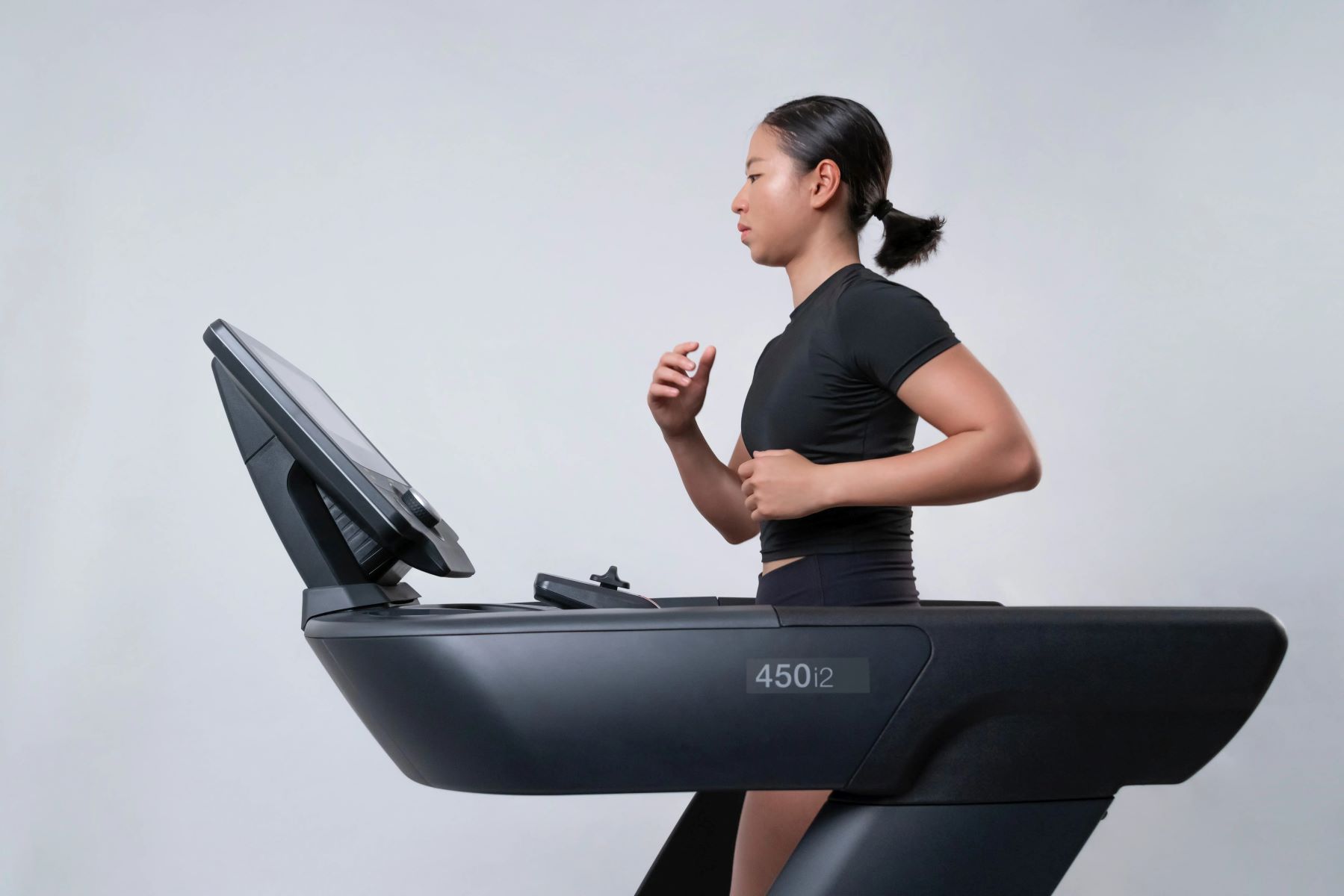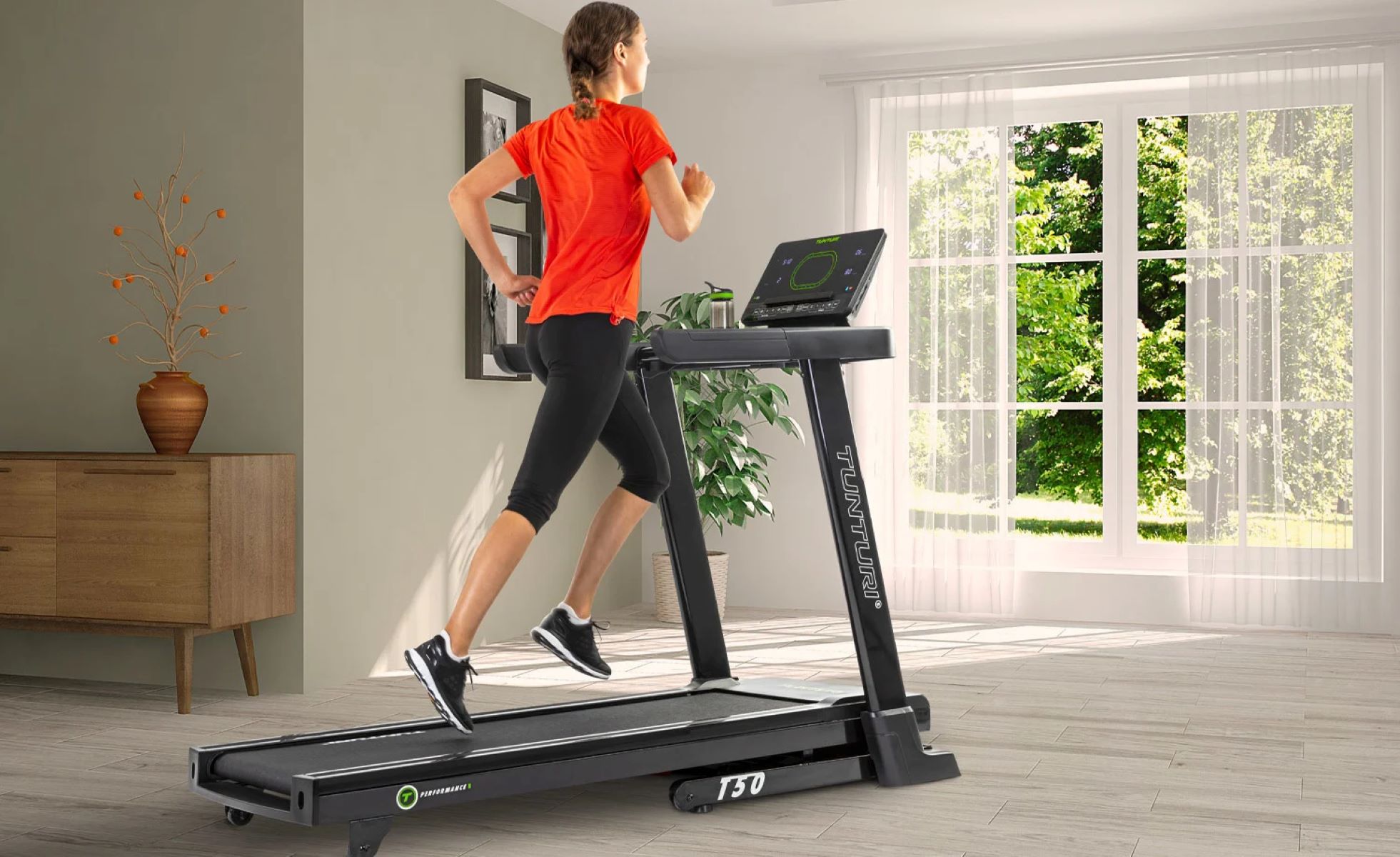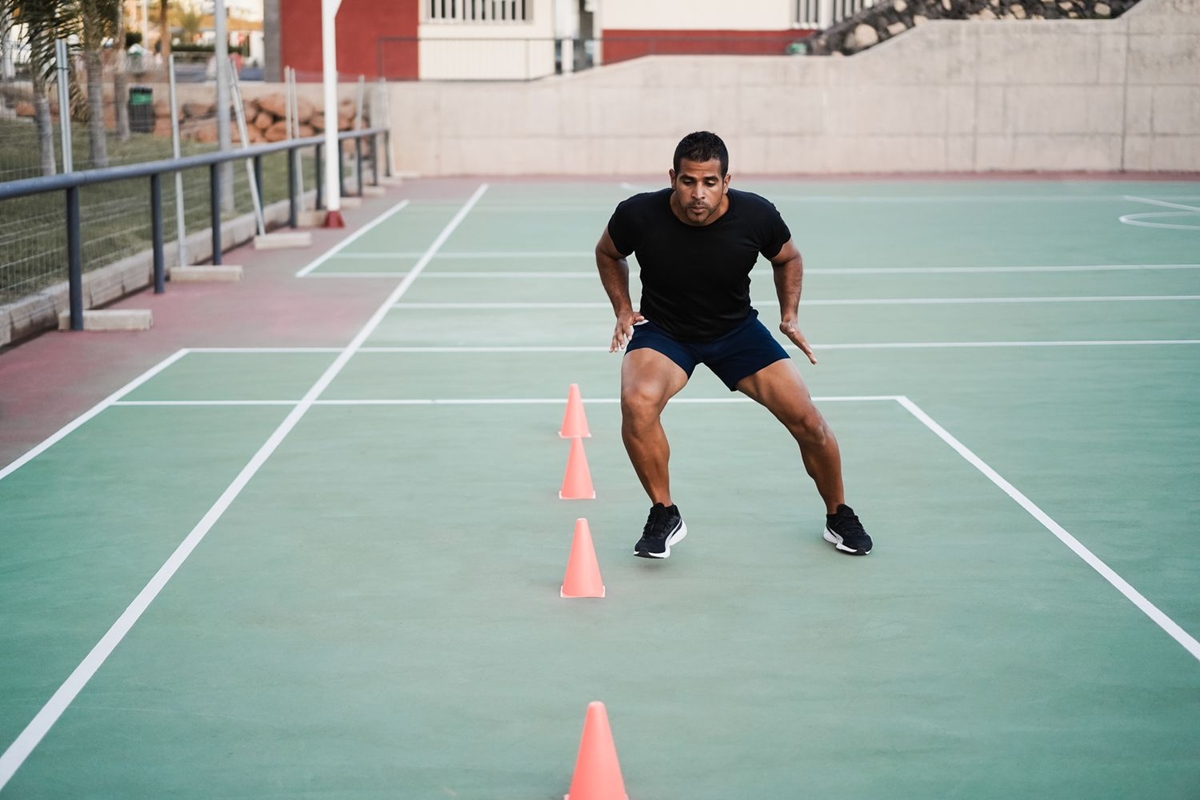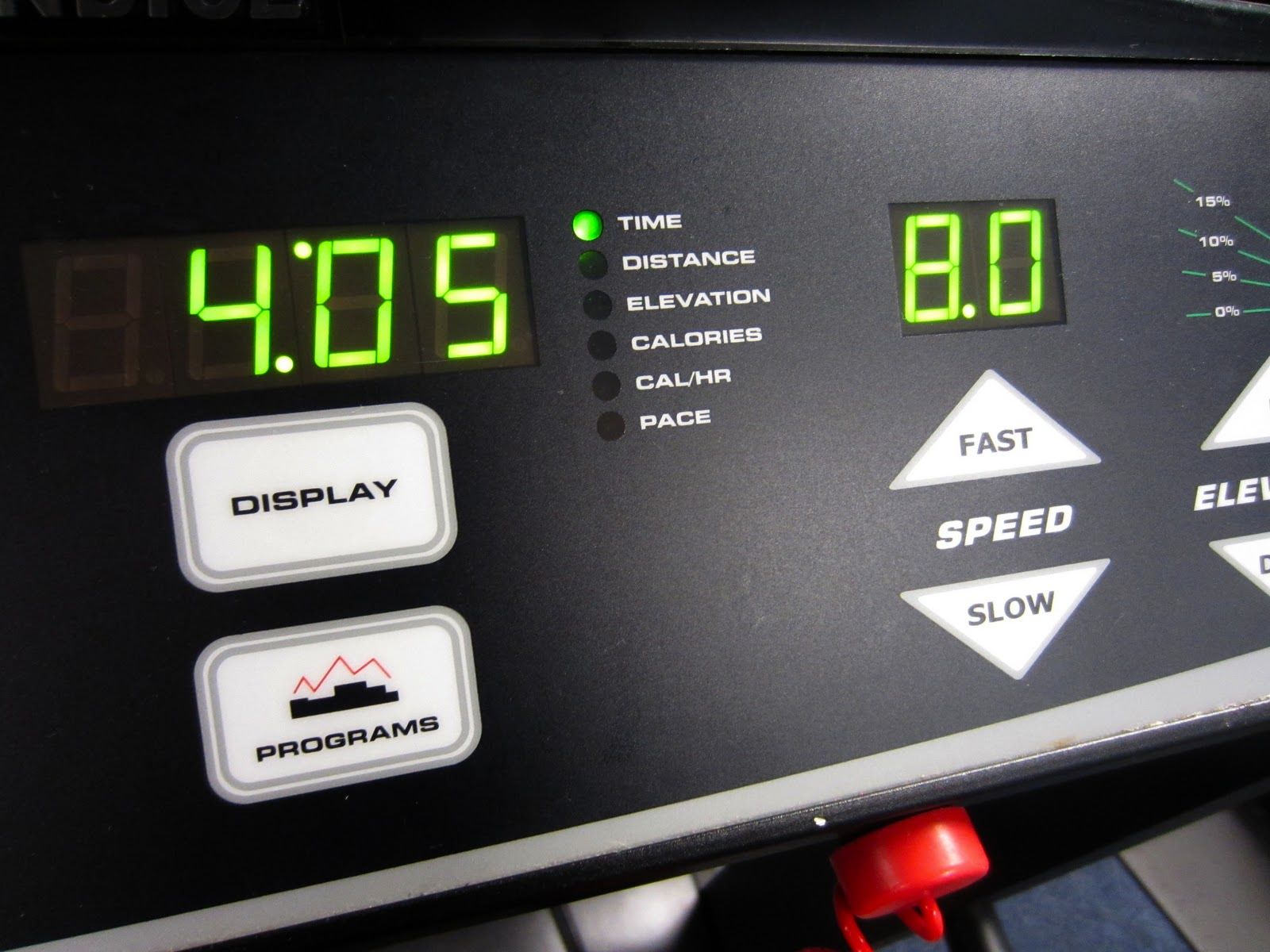

Featured
How Many Laps On A Treadmill Is A Mile
Modified: August 18, 2023
Discover how many laps on a treadmill equals a mile in this featured article. Find out the perfect distance to achieve your fitness goals. #Featured
Introduction
Welcome to the world of treadmill workouts! Whether you’re a seasoned runner or just starting your fitness journey, understanding how many laps on a treadmill equal a mile is essential. Treadmills provide a convenient and efficient way to exercise indoors, allowing you to control variables such as speed and incline to tailor your workout to your specific needs.
When it comes to measuring distance on a treadmill, things can get a bit confusing. Unlike running outdoors where you can easily track your mileage with GPS or landmarks, measuring distance on a treadmill requires a different approach. In this article, we’ll delve into the various factors to consider when determining how many laps on a treadmill equal a mile, as well as provide some tips to help you accurately track your mileage.
Understanding the intricacies of treadmill measurements will not only help you set realistic goals but also provide a sense of accomplishment as you progress towards your fitness objectives. So, let’s dive in and discover the secrets to calculating the number of laps on a treadmill that make up a mile!
Understanding Treadmill Measurements
Before we calculate the number of laps on a treadmill that make up a mile, it’s important to understand how treadmill measurements work. Treadmills use different units of measurement to represent speed, distance, and incline. Let’s take a closer look at these measurements:
- Speed: Treadmill speed is typically measured in miles per hour (mph) or kilometers per hour (km/h). It indicates the rate at which the treadmill belt moves.
- Distance: Treadmill distance can be measured in miles, kilometers, or laps. Some treadmills may also provide options for other units of measurement. It represents the total distance covered during your workout.
- Incline: Treadmills have the ability to simulate uphill running or walking by adjusting the incline. Incline is measured in percentage or degrees and indicates the steepness of the running surface.
It’s important to note that treadmill measurements may vary slightly between different models and brands. Therefore, it’s recommended to refer to the user manual or display settings of your specific treadmill for accurate measurements.
Also, keep in mind that treadmills may have preset workout programs that automatically adjust speed and incline to provide a varied workout experience. These programs usually come with predefined distance goals, which can be a great way to challenge yourself and add variety to your workouts.
Now that we have a basic understanding of treadmill measurements, it’s time to explore the factors that affect the number of laps required to complete a mile on a treadmill.
Factors to Consider
Calculating the number of laps on a treadmill that equal a mile depends on several factors. Let’s take a look at the key factors that can affect this measurement:
- Treadmill Belt Length: The length of the treadmill belt plays a crucial role in determining how many laps are needed to cover a mile. Longer belts allow for more strides or steps per lap, reducing the total number of laps required to complete a mile. Conversely, shorter belts may require more laps for the same distance.
- Striding or Stepping Distance: Your natural stride length or stepping distance will also impact the number of laps needed to complete a mile on a treadmill. Individuals with longer strides will cover more distance with each lap, requiring fewer laps to reach a mile. Vice versa, individuals with shorter strides may need more laps to cover the same distance.
- Incline: Running or walking on an inclined surface increases the effort required and can affect the distance covered. If you’re running at an incline, you’ll need more laps to cover a mile compared to running on a flat surface. The steeper the incline, the more additional laps you may need.
- Accuracy of Treadmill Measurements: It’s essential to ensure the accuracy of the treadmill’s measurements. Some treadmills may have slight variations in speed and distance measurements, impacting the number of laps required to complete a mile. Regular calibration and maintenance can help ensure accurate readings.
Keep in mind that these factors can vary from one treadmill model to another. Consequently, it’s advisable to familiarize yourself with the specific features and characteristics of your treadmill to obtain the most accurate measurement.
Now that we understand the various factors that come into play, let’s move on to calculating the number of laps required to cover a mile on a treadmill.
Calculating Number of Laps in a Mile
Now that we have explored the factors that can affect the number of laps required to cover a mile on a treadmill, let’s dive into the calculations.
To calculate the number of laps in a mile, you need to consider the length of the treadmill belt. First, find out the belt length by referring to the treadmill’s user manual or specifications. Typically, the belt length is listed in inches or centimeters.
Next, measure your own stride length or stepping distance. You can do this by marking a starting point on the treadmill, walking or running your natural stride length, and measuring the distance covered with a tape measure or ruler. Note down this distance in inches or centimeters.
Once you have the belt length and stride length in the same unit of measurement, divide the belt length by the stride length. This will give you the number of strides or steps needed to complete one lap.
Finally, divide the total distance in inches or centimeters of a mile by the length of one lap (in inches or centimeters). This will give you the number of laps required to cover a mile on your specific treadmill.
For example, if the belt length is 60 inches and your stride length is 30 inches, you would need 2 strides to complete one lap (60 ÷ 30 = 2). If one mile is equal to 63,360 inches, and one lap is 60 inches, then you would need 1056 laps to cover a mile (63,360 ÷ 60 = 1056).
Remember that these calculations are an approximation and may vary based on individual factors such as running or walking style and personal preferences. It’s always a good idea to track your actual mileage as you walk or run on the treadmill to get a more accurate understanding of the number of laps it takes to complete a mile.
Now that you know how to calculate the number of laps, let’s look at some tips to help you accurately track your mileage on a treadmill.
Tips for Accurate Mileage Tracking on a Treadmill
Accurately tracking your mileage on a treadmill is essential to monitor your progress and reach your fitness goals. Here are some tips to help you ensure accurate mileage tracking:
- Calibrate Your Treadmill: Calibration is a crucial step in ensuring accurate distance measurements. Check your treadmill user manual for instructions on calibration or consult with the manufacturer for guidance.
- Use the Same Treadmill: If possible, stick to using the same treadmill for consistency. Different treadmills may have slightly different measurements and settings, impacting your mileage tracking.
- Wear Accurate Footwear: Use proper athletic shoes that provide good support and cushioning for your feet. This helps maintain a consistent stride length and minimizes any variations in your steps.
- Track Your Stride Length: Measure your stride length periodically to ensure it remains consistent. Factors such as fatigue or changes in running or walking form can affect your stride length, leading to inaccurate mileage tracking.
- Make Precise Adjustments: When adjusting the speed or incline on the treadmill, do so gradually and in small increments. Sudden or large adjustments can impact your stride length and overall distance covered.
- Utilize Technology: If available, take advantage of the treadmill’s built-in tracking features or use fitness apps on your smartphone or smartwatch to help monitor and record your mileage accurately.
- Manual Tracking: As an additional measure, manually count your laps as you go. This can provide a backup method to verify the accuracy of the treadmill’s distance tracking.
By following these tips, you can ensure more precise mileage tracking on a treadmill and have a better understanding of your progress during each workout session.
Now, armed with the knowledge of calculating laps and tips for accurate mileage tracking, you can confidently track your progress and work towards achieving your fitness goals.
Conclusion
Congratulations on completing this journey through the world of treadmill measurements and calculating the number of laps on a treadmill that make up a mile. Understanding these concepts is crucial for accurately tracking your mileage and setting realistic fitness goals on a treadmill.
We’ve explored the various factors that can affect the number of laps required to cover a mile, such as the treadmill belt length, stride length, incline, and the accuracy of the treadmill’s measurements. By considering these factors, you can make more informed calculations and have a better understanding of your progress.
Remember, accurate mileage tracking on a treadmill is essential for monitoring your fitness progress and achieving your goals. The tips provided, such as calibrating your treadmill, using the same treadmill consistently, wearing appropriate footwear, and tracking your stride length, will help ensure more precise measurements.
Ultimately, the number of laps it takes to cover a mile on a treadmill may vary depending on individual factors and treadmill specifications. It’s important to focus on tracking your actual mileage and progress rather than getting too fixated on the number of laps.
Now that you’re armed with the knowledge and tips to accurately track your mileage on a treadmill, it’s time to lace up your shoes, hop on the treadmill, and start working towards your fitness goals with confidence. Keep pushing yourself, stay consistent, and celebrate each milestone along the way. Happy running or walking!









